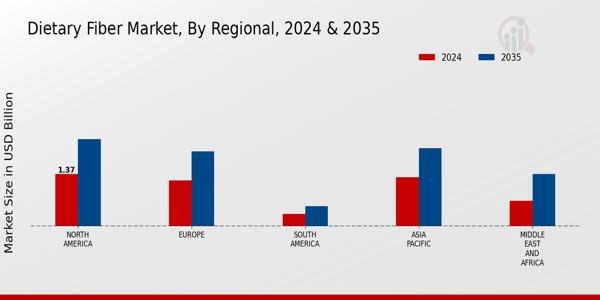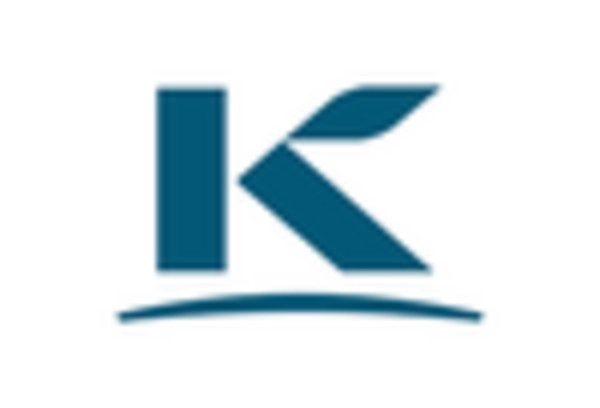Rising Health Awareness
The increasing awareness regarding health and wellness among consumers appears to be a primary driver for the Dietary Fiber Market. As individuals become more informed about the benefits of dietary fiber, such as improved digestion and reduced risk of chronic diseases, the demand for fiber-rich products is likely to surge. Recent data indicates that the dietary fiber consumption has seen a notable increase, with many consumers actively seeking out products that contain higher fiber content. This trend is particularly evident in the growing popularity of whole grains, fruits, and vegetables, which are recognized for their fiber benefits. Consequently, manufacturers are responding by fortifying their products with dietary fiber, thereby expanding their offerings in the Dietary Fiber Market.
Regulatory Support and Guidelines
Regulatory support and guidelines play a crucial role in shaping the Dietary Fiber Market. Governments and health organizations are increasingly recognizing the importance of dietary fiber in promoting public health. Initiatives aimed at encouraging higher fiber intake are being implemented, which may include dietary recommendations and labeling regulations. Such measures not only educate consumers about the benefits of fiber but also incentivize manufacturers to enhance the fiber content in their products. For example, certain countries have established daily fiber intake recommendations, which could potentially drive the demand for fiber-rich foods. This regulatory framework is likely to foster growth in the Dietary Fiber Market as both consumers and producers align with these health objectives.
Product Innovation and Development
Innovation in product development is a significant catalyst for growth within the Dietary Fiber Market. Companies are increasingly investing in research and development to create new and improved fiber-rich products that cater to diverse consumer preferences. This includes the introduction of functional foods, snacks, and beverages that are not only high in fiber but also appealing in taste and texture. For instance, the incorporation of soluble fibers like inulin and psyllium into various food products has gained traction. Market data suggests that the introduction of such innovative products has led to a rise in consumer interest, with sales of fiber-enriched items experiencing a marked increase. This trend indicates that the Dietary Fiber Market is evolving to meet the changing demands of health-conscious consumers.
Growing Demand for Functional Foods
The growing demand for functional foods is a notable driver for the Dietary Fiber Market. Consumers are increasingly seeking foods that offer health benefits beyond basic nutrition, and dietary fiber is often at the forefront of these functional attributes. Products that are fortified with dietary fiber are perceived as healthier options, appealing to a broad demographic, including those with specific dietary needs. Market analysis indicates that the functional food sector is expanding rapidly, with fiber-enriched products gaining popularity among health-conscious consumers. This trend suggests that the Dietary Fiber Market is well-positioned to capitalize on the rising interest in functional foods, as manufacturers innovate to meet consumer expectations.
Increased Focus on Preventive Healthcare
An increased focus on preventive healthcare is emerging as a significant driver for the Dietary Fiber Market. As healthcare costs continue to rise, consumers are becoming more proactive about their health, seeking dietary solutions that can help prevent diseases. Dietary fiber is widely recognized for its role in reducing the risk of conditions such as obesity, diabetes, and cardiovascular diseases. This awareness is prompting individuals to incorporate more fiber into their diets, thereby boosting the demand for fiber-rich products. Market data suggests that the preventive healthcare trend is influencing purchasing decisions, with consumers gravitating towards foods that support long-term health. Consequently, the Dietary Fiber Market is likely to experience sustained growth as it aligns with this preventive health paradigm.


















Leave a Comment